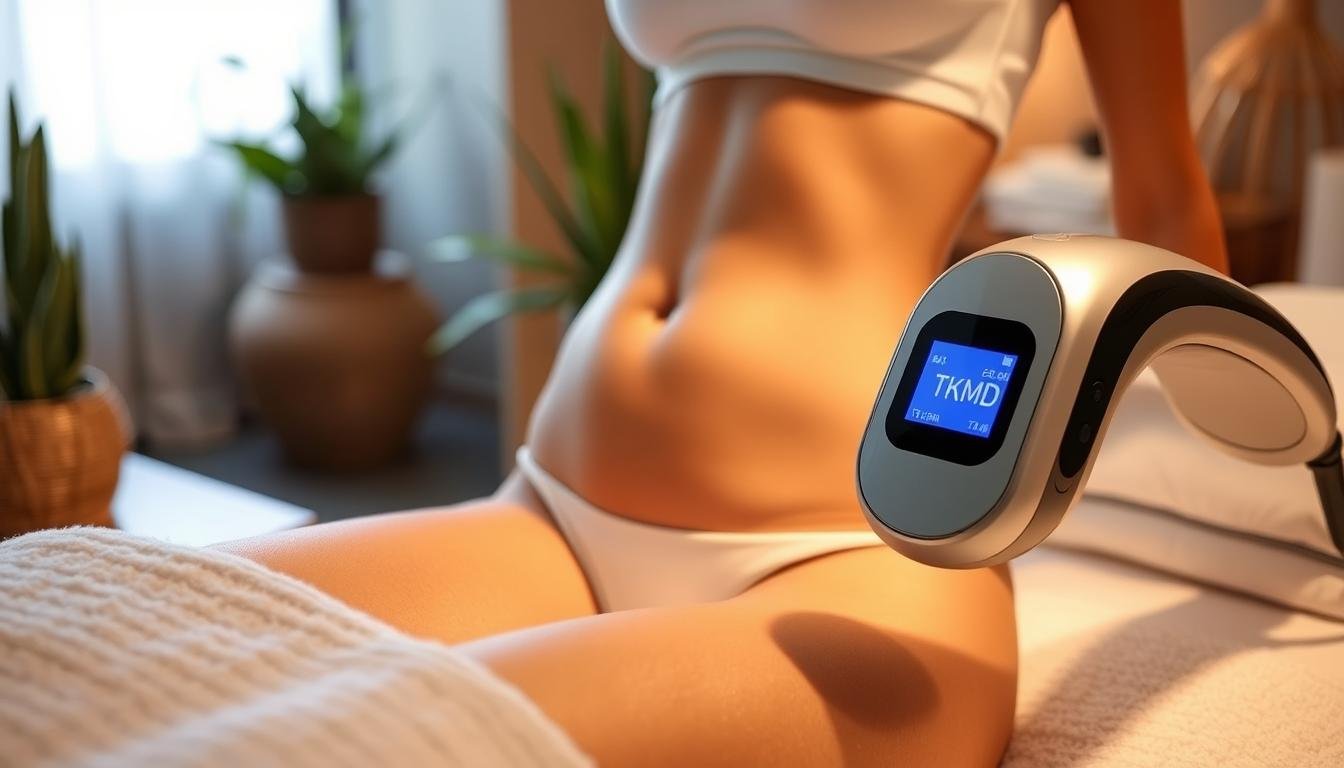As we age, our skin’s elasticity begins to decline due to the reduced production of collagen and elastin, proteins that give our skin its structure and firmness. Factors such as pregnancy and significant weight loss can also lead to sagging skin and stretch marks in the abdominal area. For many, the idea of regaining a firmer abdomen is a significant motivator to explore available treatments.
Fortunately, various cosmetic enhancements and skin tightening treatments can help restore a smoother, more youthful appearance. Understanding the options and their benefits is crucial for making informed decisions about one’s body and achieving the desired results.
Key Takeaways
- Reduced collagen and elastin production contributes to skin laxity.
- Pregnancy and weight loss can cause sagging skin and stretch marks.
- Various skin tightening treatments are available for a firmer abdomen.
- Cosmetic enhancements can improve appearance and self-confidence.
- Understanding treatment options is key to achieving desired results.
Understanding Loose Stomach Skin
Loose stomach skin is a condition characterized by a loss of skin firmness and elasticity in the abdominal area, often resulting from a combination of intrinsic and extrinsic factors. This condition can significantly impact an individual’s self-confidence and overall quality of life.
The skin on our abdomen is subject to various stresses, including weight fluctuations, pregnancy, and the natural aging process. As a result, understanding the causes and effects of loose stomach skin is crucial for determining the most effective treatment options.
Causes of Abdominal Skin Laxity
Abdominal skin laxity can arise from multiple factors. As we age, the collagen and elastin production in our body decreases, leading to reduced skin firmness. External factors such as sun exposure, smoking, and poor nutrition can also accelerate the breakdown of these essential proteins, further compromising skin elasticity.
Role of Collagen and Elastin in Skin Firmness
Collagen and elastin are two crucial proteins that contribute to skin firmness. Collagen provides structural support and strength, while elastin allows the skin to stretch and bounce back. Effective tummy skin tightening treatments often work by stimulating new collagen production or strengthening existing collagen fibers to restore firmness to the abdominal area. For more information on treatments, visit treatments for loose stomach skin.
Non-Surgical Tummy Skin Tightening Treatments
For those seeking to tighten their tummy skin without undergoing surgery, several non-surgical treatments are available. These treatments aim to improve the appearance of loose skin on the abdomen without the need for invasive surgical procedures.
Radiofrequency Treatments (Thermage, Thermalift, Exilis)
Radiofrequency treatments are a popular option for non-surgical tummy skin tightening. Devices like Thermage, Thermalift, and Exilis use radiofrequency energy to heat the deeper layers of the skin, stimulating collagen production and tightening the skin.
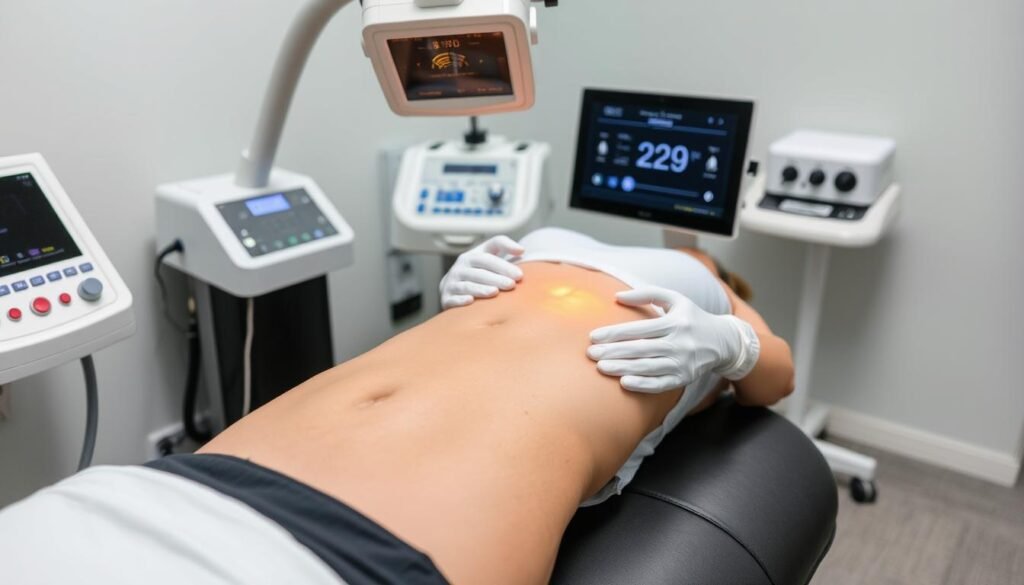
Ultrasound Therapy (HIFU)
Ultrasound therapy, also known as HIFU (High-Intensity Focused Ultrasound), is another effective non-surgical treatment for tightening abdominal skin. It works by delivering focused ultrasound energy to the deeper tissue layers, promoting collagen production and skin tightening.
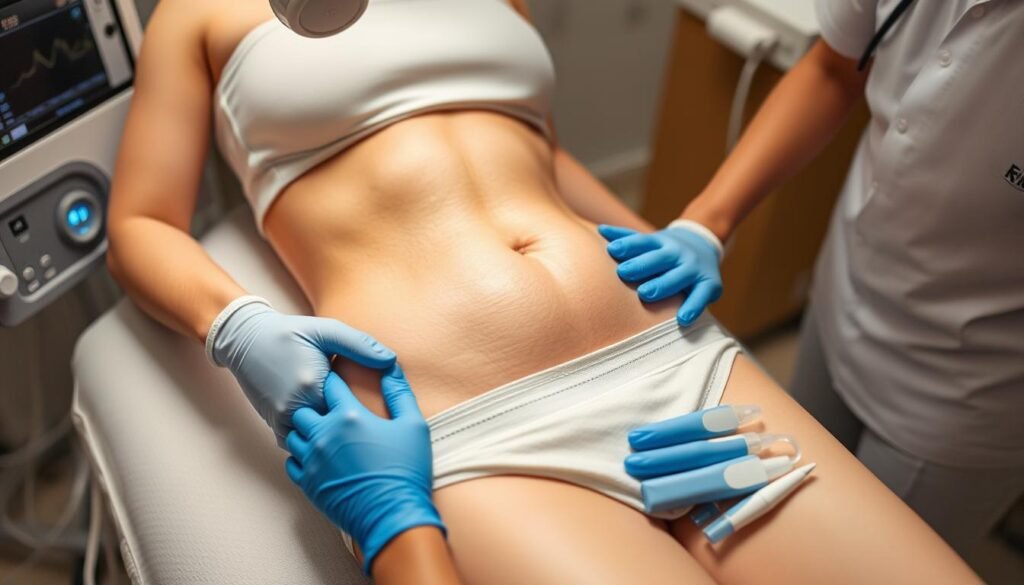
Intense Pulsed Light/Radiofrequency (Velashape)
Velashape is a non-invasive treatment that combines radiofrequency energy with infrared light and mechanical massage to target both skin laxity and underlying fat deposits in the abdominal area. This multi-technology approach addresses multiple concerns simultaneously, working to reduce fat cells while also tightening the skin.
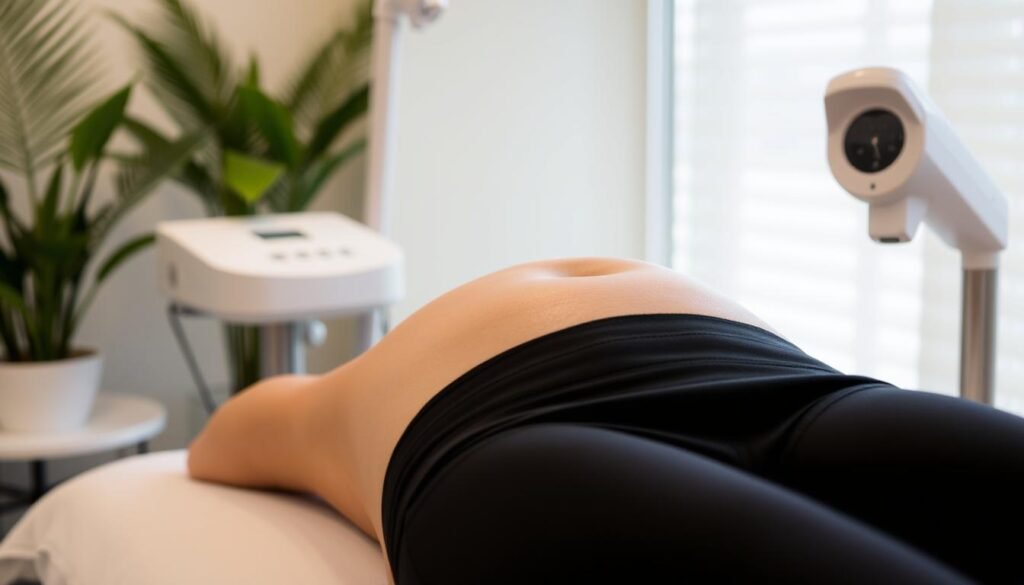
To explore more about non-surgical skin tightening treatments, including laser energy treatments, visit our website for detailed information.
At-Home Skin Tightening Options
For those seeking to tighten their stomach skin without professional medical interventions, at-home skin tightening options have become increasingly popular. These solutions range from handheld devices to topical products, offering various degrees of effectiveness.
Handheld Devices and Their Effectiveness
Handheld devices, such as radiofrequency and microcurrent devices, are designed to stimulate collagen production and improve skin elasticity. They offer a non-invasive method to achieve tighter skin.
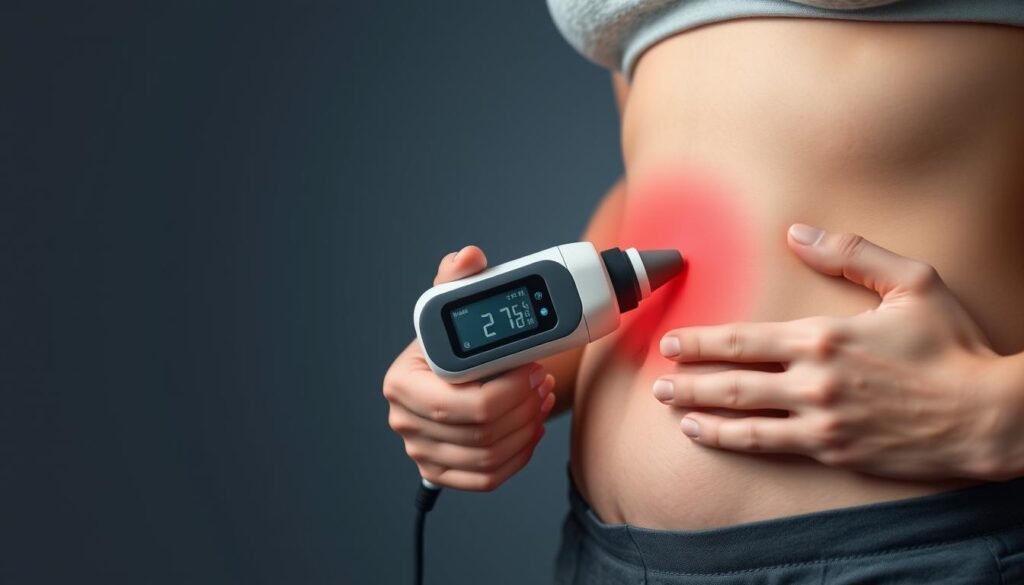
Topical Products: Do They Work?
Topical products, including creams and lotions, claim to improve skin tightening by hydrating the skin and stimulating collagen. While they may provide temporary improvements, their effectiveness for significant loose skin is limited.

Surgical Options for Tummy Skin Tightening
When non-surgical methods are not enough, surgical options like tummy tucks can offer a more definitive solution. Surgical procedures can address significant loose skin and fat around the abdomen, providing a firmer and more toned appearance.
Tummy Tuck (Abdominoplasty)
A tummy tuck, or abdominoplasty, is a surgical procedure that removes excess skin and fat from the abdomen, tightening the abdominal muscles in the process. This results in a smoother, more toned abdominal area. The surgery is particularly beneficial for individuals with significant loose skin due to weight loss or post-pregnancy changes.
The recovery period for a tummy tuck can vary, but most patients can expect to return to normal activities within a few weeks. The results are generally long-lasting, provided a stable weight is maintained.

Mini Tummy Tuck
A mini tummy tuck is a less extensive surgical procedure ideal for individuals with loose skin and fat below the navel. It involves a shorter incision than a full tummy tuck, resulting in a smaller scar and faster recovery time. This procedure is suitable for those with good skin elasticity in the upper abdomen but excess skin below the belly button.
Key benefits include a shorter recovery period, typically 2-3 weeks, and significant improvement in the appearance of the lower abdomen. Ideal candidates are those with a small “pooch” that hasn’t responded to diet and exercise.
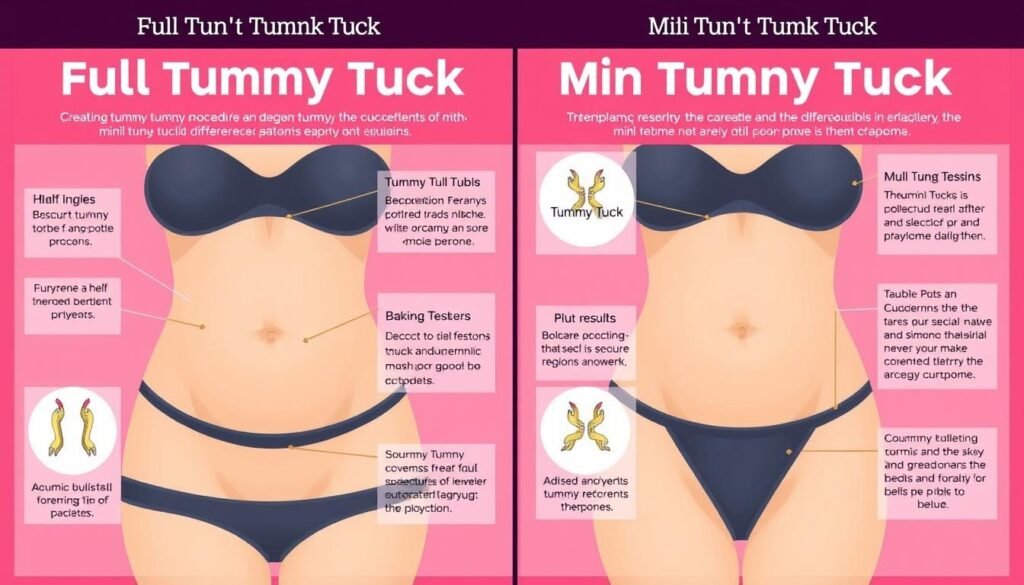
Effectiveness of Tummy Skin Tightening Treatments
For individuals dealing with loose stomach skin, understanding the efficacy of different tummy skin tightening treatments is crucial. The effectiveness of these treatments varies based on several factors, including the severity of skin laxity and the type of treatment chosen.
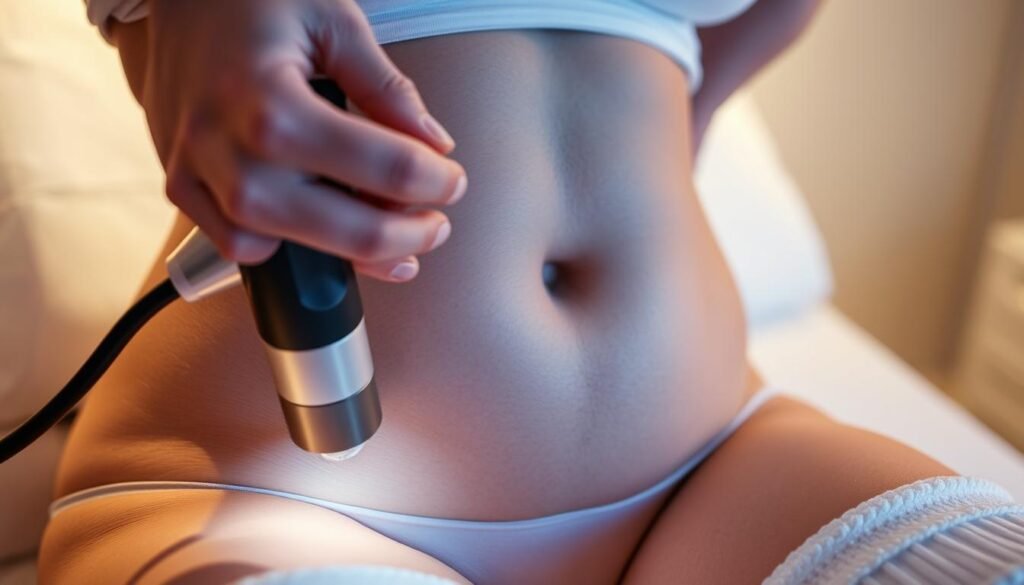
What Research Shows About Results
Studies have shown that skin tightening treatments can provide significant improvement in skin firmness. Non-surgical treatments, such as radiofrequency and ultrasound therapy, have been shown to stimulate collagen production, leading to gradual skin tightening over several months.
Realistic Expectations for Different Methods
It’s essential to have realistic expectations when undergoing tummy skin tightening treatments. Non-surgical options typically offer subtle to moderate improvements, while surgical procedures like tummy tucks can deliver more dramatic results. Factors such as age, skin condition, and lifestyle choices can influence treatment outcomes.
Cost Comparison of Skin Tightening Options
The financial aspect of tummy skin tightening treatments is a critical factor that influences the choice of procedure. Understanding the costs associated with different methods can help individuals make informed decisions.
Non-Surgical Treatment Pricing
Non-surgical skin tightening methods vary in cost. While they may require maintenance treatments, they often have a lower upfront cost compared to surgical options. The prices for these treatments can range widely based on the technology used and the number of sessions required.
- Radiofrequency treatments can cost between $1,000 to $3,000 per session.
- Ultrasound therapy sessions may range from $1,500 to $4,000.
Surgical Procedure Costs
Surgical options like tummy tucks are more invasive and have a higher initial cost, but they can provide more permanent results. The cost of a tummy tuck can range from $6,000 to $12,000, including various fees and post-operative care. Additional expenses may include prescription medications ($100-$300) and compression garments ($50-$200).
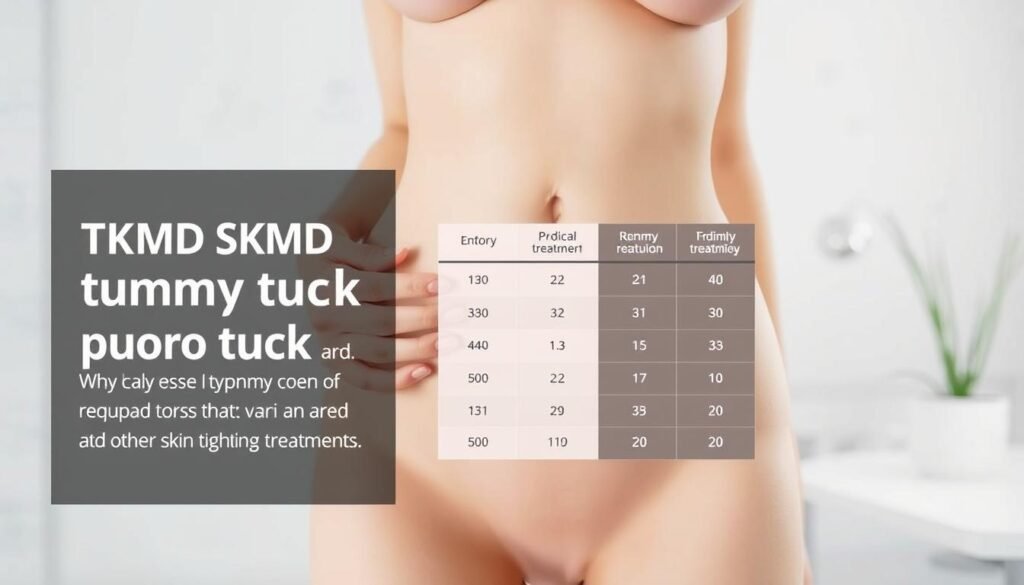
Recovery and Downtime Considerations
When considering tummy skin tightening treatments, understanding the recovery process is crucial. The extent of downtime varies significantly between non-surgical and surgical options.
What to Expect After Non-Surgical Treatments
Non-surgical methods of skin tightening, such as radiofrequency and ultrasound therapy, typically require little to no downtime. These treatments are often described as having minimal side effects, allowing patients to resume their normal activities immediately or shortly after treatment.
Surgical Recovery Timeline
Surgical options, like a tummy tuck, involve a more extensive recovery period. Patients usually need 2-3 weeks off work and must avoid strenuous activities for 4-6 weeks. As noted by a board-certified plastic surgeon, “The initial 1-2 weeks after surgery are usually the most uncomfortable, requiring prescription pain management and assistance with daily tasks.” The use of surgical drains and compression garments is also common, aiding in the healing process. 
As stated by the American Society of Plastic Surgeons, “While surgical recovery is more intensive, the results are immediate and continue to improve over 3-6 months as swelling subsides and tissues settle.” This highlights the importance of patience and realistic expectations in the recovery process.
Natural Methods to Support Skin Tightening
Besides medical interventions, several natural strategies can contribute to achieving tighter skin. These methods focus on improving overall skin health and can be used in conjunction with medical treatments.
Strength Training and Exercise
Engaging in strength training exercises can help build muscle mass, which in turn can improve the appearance of loose skin. Regular physical activity also enhances circulation, supporting overall skin health.
Nutrition for Skin Health
A diet rich in antioxidants, vitamins, and minerals is crucial for maintaining healthy skin. Foods high in omega-3 fatty acids, such as salmon, and those rich in vitamin C, like citrus fruits, can support skin elasticity.
Hydration and Its Impact on Skin Elasticity
Proper hydration is fundamental to maintaining skin elasticity. Drinking 2-3 liters of water daily can help flush toxins from the body and keep skin cells hydrated. Water-rich foods like cucumbers and watermelon also contribute to overall hydration.
- Drinking water helps maintain the skin’s moisture barrier.
- Adequate hydration supports optimal cellular function.
- Dehydration can make loose skin appear more pronounced.
Conclusion: Choosing the Right Tummy Skin Tightening Treatment
Selecting the most appropriate tummy skin tightening treatment is a decision that hinges on several critical factors, including the severity of skin laxity, budget constraints, desired results, and willingness to undergo recovery time.
A consultation with a board-certified dermatologist, plastic surgeon, or cosmetic physician is essential for receiving personalized recommendations. For mild to moderate skin laxity, non-surgical options like radiofrequency treatments can provide satisfactory results with minimal downtime. In contrast, severe skin laxity may require surgical intervention. Combining professional treatments with at-home maintenance, proper nutrition, and targeted exercise often yields the most successful outcomes. Maintaining a stable weight after treatment is crucial for preserving skin tightening results long-term.

